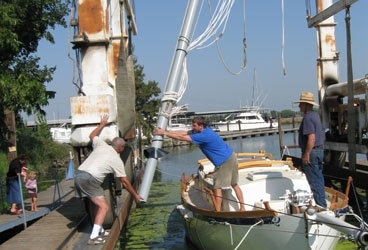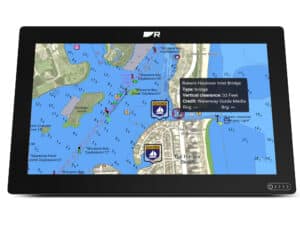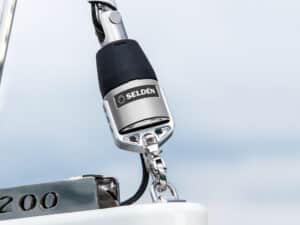
zartman mast 368
While customizing the design of our Cape George 31, Ganymede, one of the most agonizing decisions I faced was choosing the style of rig it should have. Danielle and I, while cruising in Maine on our last boat, had seen plenty of gaffers gracefully swooping to and fro between fog banks, and the shape of a gaff-rigged sail has always drawn my eye. In short, I really wanted a gaff rig. But one doesn’t pour his heart and soul, not to mention all his money, into the construction of a boat without carefully weighing every variation from the factory drawings.
The decision to take the plunge came only after diligent research: emails to the designer of the factory sail plan, careful readings of John Leather’s The Gaff-Rig Handbook and Tom Cunliffe’s Hand, Reef, and Steer, and many hours of online browsing. There seemed to be as many pros as cons, but in the end, knowing I’d regret it forever if we didn’t at least try, I drew a gaff-rigged sail to scale. It took considerable fine-tuning to determine the centers of lateral pressure and effort, bowsprit lengths, and (scariest of all) mast positioning, but in the end, all the measurements made sense on paper.
Not trusting in what made sense to me, I mailed the drawing to Brion Toss’ rigging shop in Port Townsend, Washington, for a consultation. A few weeks later, it returned with surprisingly few corrections.
With my confidence bolstered by that affirmation, I began building the mast step and partner 8 inches farther forward than the drawings specified, which made for a roomier saloon and more space for the dinghy perched on the coachroof.
“All we have to do now,” I happily chirped to my wife, “is find a 40-foot-long aluminum pole. Piece of cake.”
Turns out, a 40-foot length of 6-inch-wide 6061-T6 tubing proved impossible to find. There are endless suppliers of 20-foot lengths, and as many welders willing to butt-join them together, but I didn’t want a splice halfway between partner and hounds. We found 40-foot lengths of the wrong alloy. We found 40-foot flagpoles of the right alloy but with a taper. We found mills that would make 40-foot lengths if we bought 1,500 pounds of them, but nowhere could we get just one tube for sale at any price.
We were beginning to look into wooden poles when Danielle stumbled across a light-pole company’s website. There was the right alloy, the right diameter, the right wall thickness, and-best of all-the right price. The only thing lacking was sufficient length.
“Let’s buy it anyway,” I said wearily. “I’ll make the mast step higher and put a topmast aloft.”
A week or so later, a beautiful, 35-foot satin-brushed aluminum light pole sat on sawhorses next to the shop, and I had a local machinist fabricate the tangs and hounds out of aluminum bar stock. It took surprisingly little time to put it all together, once I had the pieces back from the machine shop, and in just a few weeks, it was ready to paint.
It looked beautiful, sitting there gleaming with fresh gray paint.
“But will it work?” I mused. “What if it’s too heavy? Or if it buckles?” The only way to find out was to take it out to sea. As the date for sea trials nears, the wondering and worrying only get worse. Will Ganymede sweep gracefully from one fog bank to the next, like the boats that inspired her rig? I guess I’ll have to let you know.
As he has throughout the project, Ben Zartman continues to file regular reports on the progress of Ganymede, his Cape George 31.








